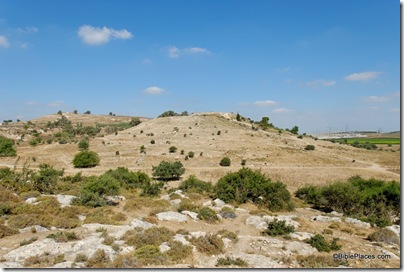An update for the 2008 season at Gath (Tell es-Safi) is now posted at The Bible and Interpretation website. Director Aren Maeir has summarized the discoveries and it’s worth reading in full. Some of the highlights:
Early Bronze Age: the site was apparently huge
Middle Bronze Age: more excavation of the city wall and glacis
Late Bronze Age: a very large building, with rich collection of pottery
Iron Age I: remains of plants and animals could help determine the Philistines’ diet; Mycenaean IIIC pottery found
Iron IIA (1000-800 B.C.): – all bullet points are direct quotations from the article
- clear early Iron IIA pottery
- a well-dated fragment of a seal impression (of the late 21st Dynasty in Egypt, ca. mid-10th cent BCE)
- several nice clusters of carbonized grape pips. This latter find should be able to provide robust 14C datings for this phase
- One cannot overemphasize the importance of the finds in this level, since it may provide the first concrete, well-dated (from several perspectives) context from the early Iron Age IIA in Philistia. In fact, the finds from this level may serve as a central key to solving the “hot debate” on the chronology of the Iron Age, raging for now for more than a decade. Hopefully, the 14C results will be available by late 2008.
- these finds demonstrate conclusively that our original assumption that the city of Gath was very large during the Iron Age IIA, reaching ca. 45-50 hectares [108-120 acres] in size, was correct. This makes it perhaps the largest site in Philistia, and perhaps in the entire Land of Israel during this period. As such, it appears to match the image of Gath that is portrayed in the biblical texts that relate to the early monarchy, in which the city is described as the largest and most important of five cities of the Philistine Pentapolis, the primus inter pares among the five cities.
Iron IIB (c. 700 B.C.): two destruction layers, possibly related to Sargon II and Sennacherib
Methodology: “in-field laboratory (including an IR spectrometer in the field), which was supplemented by the additional laboratories back in the base camp, provided us with “on-line” results of these analyses – which enabled “real-time” understanding of the archaeological finds. This joint program is unparalleled at ANY excavation in Israel, and in fact, in the world. The close integration of a “regular” excavation team with a wide team of archaeological scientists IN THE FIELD, is simply unparalleled anywhere.”
For many reasons, this excavation looks like it will be extremely beneficial for archaeological and biblical studies.
